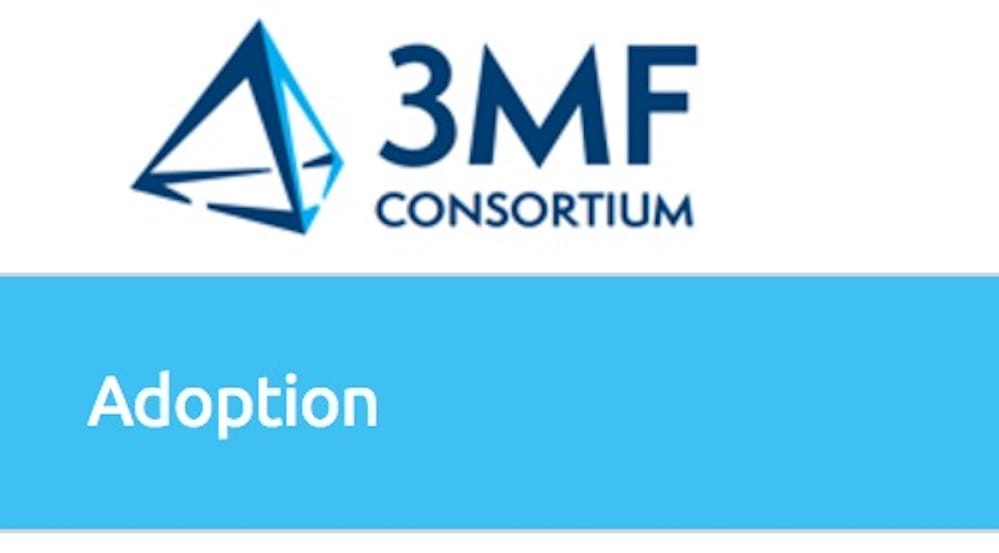
A couple of years ago, a consortium introduced something called “3MF”.
It was originally designed by Microsoft, and is a set of standards that can be used to describe a 3D file. The impetus was the drastic situation in the 3D printing world, where the poor STL file format was the de facto standard in the industry.
The problem was that STL is quite problematic:
- It attempts to describe the exterior skin of a 3D shape, but does not guarantee that it is solid
- It has no texture or color information
- It has no means to identify different materials or requirements thereof
- It has no indication of the measurement scale used for a model
- It has no version or serial numbers and offers no way to identify a particular 3D model other than the filename
And the worst bit is that is deeply embedded into virtually every piece of software and services associated with 3D printing, making it very difficult to extinguish.
Thus there were many reasons to pursue 3MF. But how well is it doing these days? Can you use it routinely?
There are a number of 3D software packages that now directly support 3MF, such as Solidworks, Slic3r and others. Similarly, some 3D print services support uploads of 3MF format, including i.Materialise and a few others.
But there are plenty of 3D services and software that still do not support 3MF format. One is Shapeways, as shown above. Shapeways is a member of the 3MF consortium. Here is the Shapeways error message:
You attempted to upload the file “XYZ.3mf” which has an unsupported or missing file extension. We currently only support STL, OBJ, X3D, Collada, VRML97, VRML2 and ZIP file formats. Please ensure that your files are of one of our supported formats with the correct file extensions. If you can’t export to those formats, please see our tutorial “Converting with AccuTrans”.
Fusion 360, from Autodesk, one of the key members of the 3MF consortium, does not seem to offer .3MF model download. They do, however, offer a plugin that can do the conversion – but that’s more steps that many users may not take.
Simple 3D tools like Tinkercad do not mention 3MF and it is unlikely they will in the near future. Autodesk’s Meshmixer does permit export of 3MF format.
At the 3MF Consortium website on their “Adoption” page, we find a rather short list of adopters: 8 software tools, 3 services, 5 hardware slicers and one API. That’s not a very extensive list, although I suspect there are a few more that haven’t yet made the list.
It is possible to convert a file to 3MF format, as there are a few converters available, such as CrossManager, but that really puts a dent into your efficient workflows.
http://www.datakit.com/en/cross_manager.php
Worse, I find that I often use multiple 3D programs to complete a task. Start here, edit with this, rework with that, fix with something else and then go back to the first program. The problem is that if ANY of those don’t support 3MF, your 3MF workflow is pooched.
I still get the feeling that STL is entrenched in 3D printing, at least for now. Indeed, even the printer manufacturer’s slicing programs by default accept STL, and some of those will be around a long time as machines may be leased for years yet to come.
Are you using 3MF on a daily basis? Let us know in the comments.
Is 3MF ever going to succeed? In spite of my doom and gloom above, I think it will, eventually. All it will take is a critical mass of services and software to make it available and then one day people will realize it is a better option – and that it can actually work for them in their workflows.
But that day is not today.

